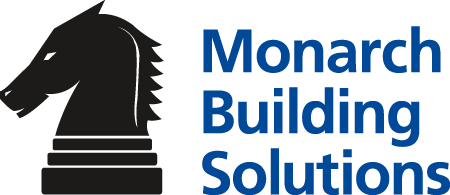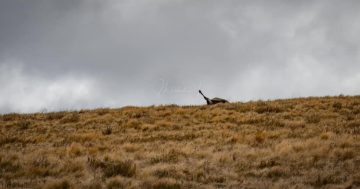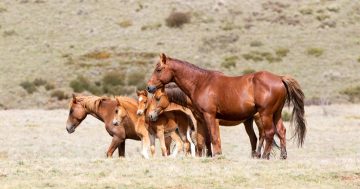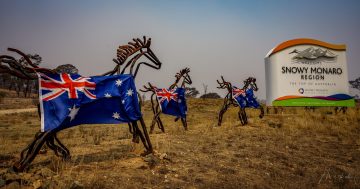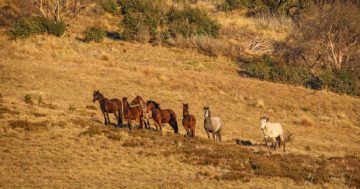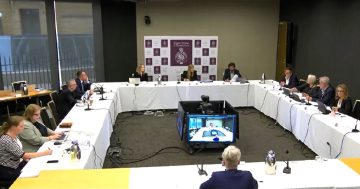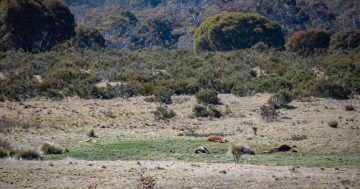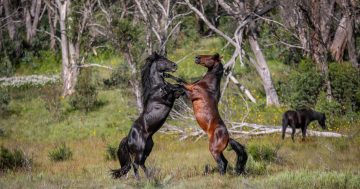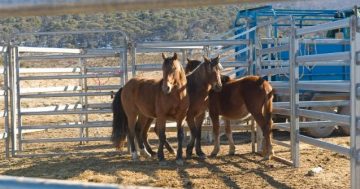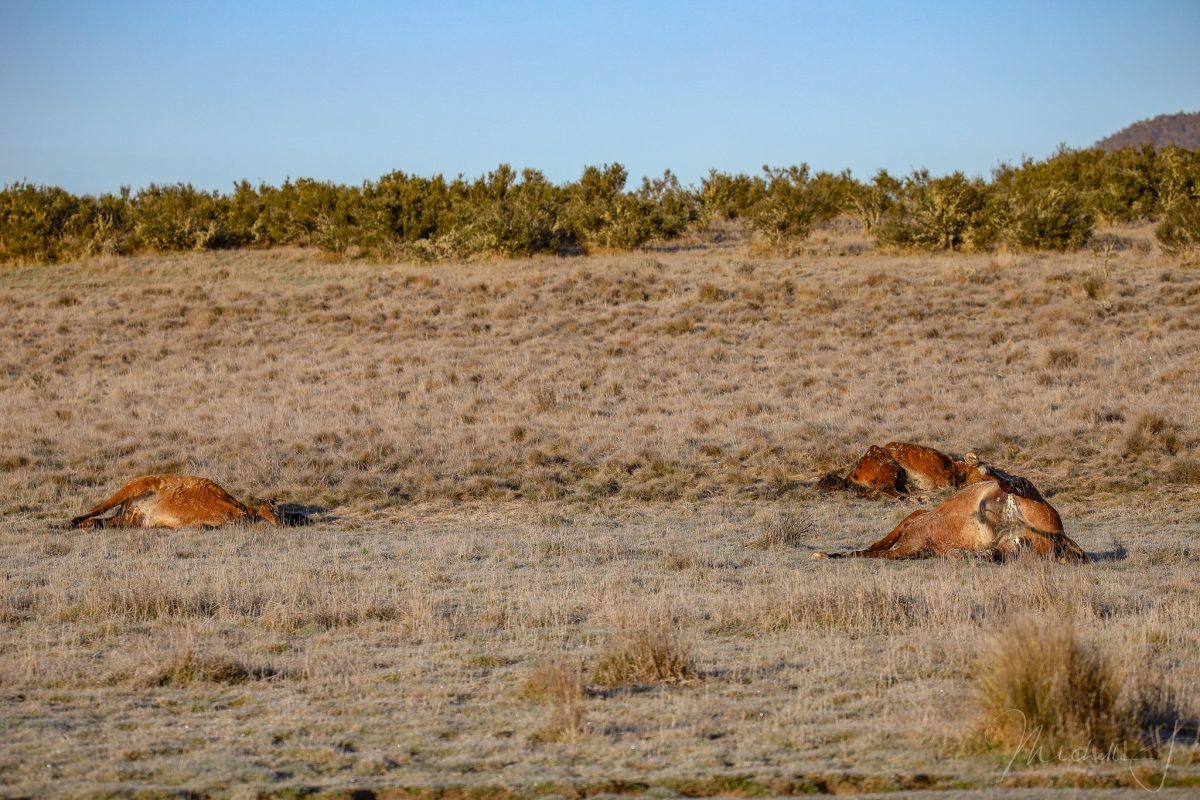
The scene that greeted Ian and Michelle Brown when they arrived in Kosciuszko National Park on Saturday. Photo: Snowy Brumby Photography Adventures/Facebook.
UPDATE 6 October 12:00 pm: The Senate Environment and Communications References Committee this week requested a further extension until 13 October 2023 to allow it to consider the evidence received and to conclude its deliberations.
The summer tourism season opened in Kosciuszko National Park this long weekend with the grim discovery of around 150 rotting horse carcasses in popular tourist spots.
Hikers encountered scores of carcasses scattered alongside walking tracks, while other campers simply left the park because the sight and smell of the dead animals was too traumatic.
The wild horses, or brumbies, have been shot in recent months in NSW National Parks and Wildlife (NPWS) culling operations that have resulted in an open graveyard of horse bones, skin, decaying flesh and entrails in Tantangara, Blue Waterholes and near Pockets Saddle campground, three extremely popular tourist spots on the High Plains area.
Locals, Ian and Michelle Brown, said they counted at least 130 dead wild horses near Currango and Blue Waterholes while trekking on Saturday with Ian discovering a further 20 dead horses on another trek near Pockets Saddle on Sunday.
The Browns have hiked throughout the park weekly for years, documenting the activities and movements of the individual wild horse mobs through their Snowy Brumby Photography Adventures Facebook page.
Since State Government-mandated culling operations to reduce the population of horses began in July 2020, the couple have borne witness to hundreds of horses being trapped and transported out of the park for rehoming or slaughter.
According to the NPWS, ground shooting began in the park in February 2022, but Ian and Michelle’s discovery of 67 carcasses strewn across Snowy Plain, west of Lake Eucumbene, in May 2023 threw the culling operations into the public spotlight.
Saturday’s find was a whole new level for them.
“We won’t easily forget it,” Ian said.
“There were dead horses everywhere, we topped one hill and could see carcasses laying across a plain, it was too far for us to walk, so we did a rough count but so we know there’s more out there.”
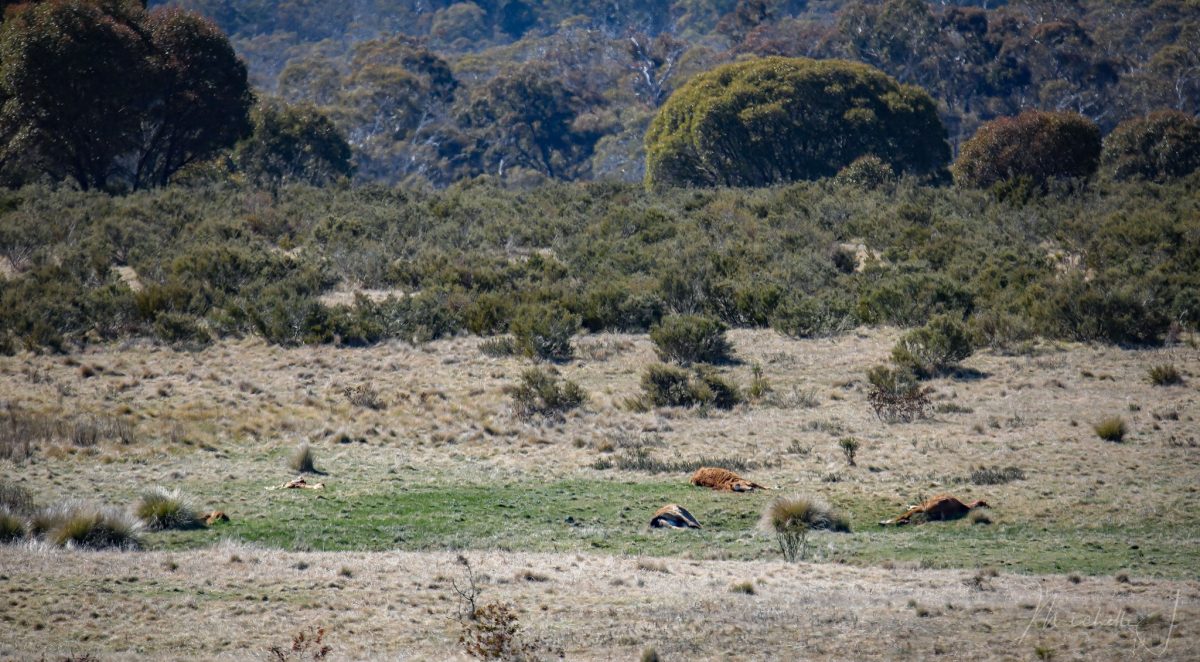
Ian Brown said the carcasses could be seen for miles. Photo: Snowy Brumby Photography Adventures/Facebook.
Mr Brown said if the scene was abhorrent to them, he couldn’t imagine how visitors to the area would be impacted.
The 650 kilometre Australian Alps Walking Trail (AAWT) – which winds through the high country of Victoria, NSW and the ACT – ran straight through one section of the park where 96 brumbies had been shot.
“We encountered two groups of hikers and gave them the heads-up, one group was certainly undecided about whether they wanted to continue,” he said.
Because these ground shootings have taken place in targeted retention management areas where, under the Wild Horse Heritage Act [2018], safeguards were put in place around mobs with strong heritage links to the park, there are now concerns these historic mobs might be obliterated.
Under the Kosciuszko National Park Wild Horse Heritage Management Plan (KNP WHHMP), the retention areas, where these mobs reside, will form the 32 per cent of the park where the target population of 3000 horses will be allowed to remain.
“If they’re shooting without discrimination, how do we know the Currango and Long Plain roans and bays have not been wiped out” Ian asked.
Heritage mobs with pioneering and pastoral links include Kiandra Greys, McDonald Silver and Taffy horses, Currango and Long Plain roans and bays, Cascade horses and Byadbo and Pilot horses
It was rumoured NSW Environment Minister Penny Sharpe MLC was planning to amend the KNP WHHMP to remove retention areas and has the entire population of wild horses from border to border in her sights for removal. This has been denied by her office.
But the minister is on the brink of making a determination on an amendment to the KNP WHHMP to allow the NPWS to start aerial culling to ramp up efforts to reduce the impact of the wild horses on the fragile alpine and sub-alpine environment.
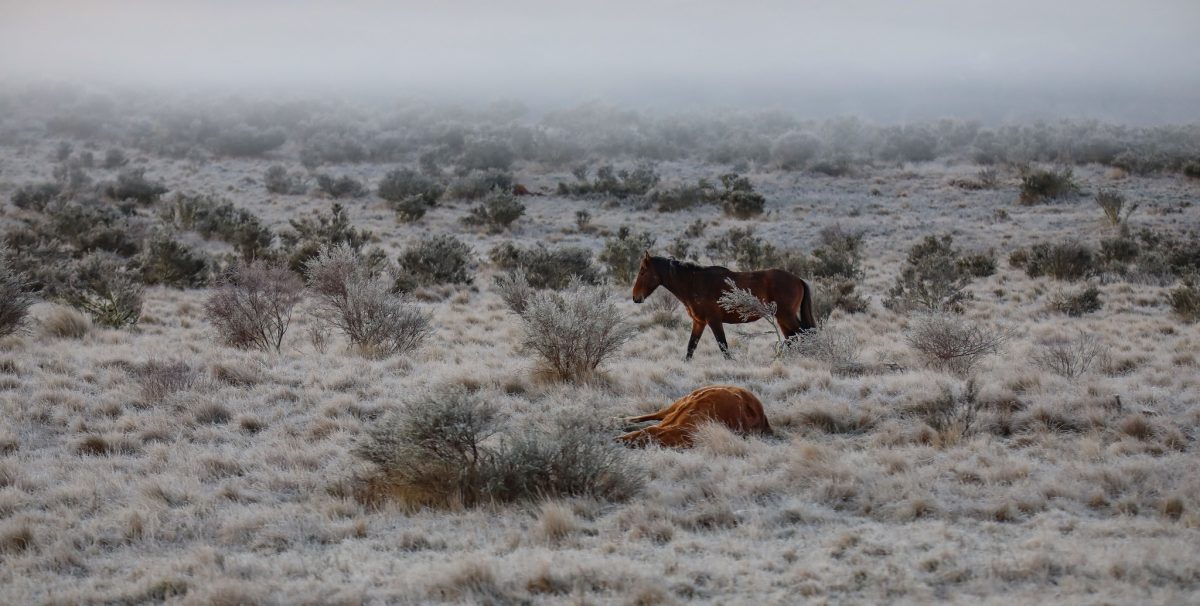
The Browns observed surviving horses lingering near the dead mobs. Photo: Snowy Brumby Photography Adventures/Facebook.
Minister Sharpe has been under pressure from conservation groups since a November 2002 survey showed the estimated wild horse population of 18,814 was up 31 per cent on the 14,000 estimate in 2020.
The Invasive Species Council said the numbers cast doubt on the NSW Government’s ability to significantly reduce the brumby population by 2027.
Submissions closed on 11 September and are currently being collated and considered.
The NPWS said evidence had already been given to the Commonwealth Senate Inquiry confirming 2201 horses were removed from Kosciuszko National Park between February 2022 and August 2023.
The report on that inquiry is due to be released on 6 October.
NSW Nationals Senator Bronnie Taylor said she was horrified when she saw the images of the dead horses.
“I just don’t understand what the agenda is here – I think the bureaucrats are fooling the ministers,” she said.
“I think an independent light needs to be shone on what NPWS are doing because there’s a plan that everyone in parliament agreed on that went through legislation and now we are hearing about horses being shot near walking tracks – which is indefensible – the park is meant to be for everyone,” Mrs Taylor said.
She’s looking forward to the upcoming NSW Upper House inquiry into the proposed aerial shooting of brumbies in KNP, which would also offer transparency around count methodology.
The NPWS say they’re under a legal obligation to reduce the population of horses in Kosciuszko National Park to 3000 by mid-2027 and, additionally, were undertaking the largest feral animal control program in its history, involving ground and aerial baiting, trapping and shooting of deer, goats, pigs, rabbits, wild dogs, foxes and feral cats.
“This is currently underway,” a spokesperson said, “and rigorous protocols are in place to ensure public safety.
“The NSW NPWS has extensive experience over many years in delivering safe shooting operations.”
Leaving carcasses to decompose in place was standard practise for feral animal control on public and private land and was consistent with the longstanding practice with deer and pig control in the park, a spokesperson added.
“Carcasses are not left in major waterways or within 400 metres of busy visitor areas such as campgrounds, except in exceptional circumstances.”
Original Article published by Edwina Mason on About Regional.






